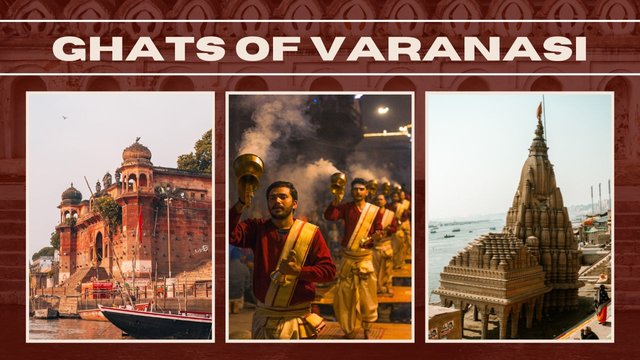Banaras Ghats: Where Spirituality Meets Serenity Along the Ganges

Nestled along the sacred Ganges River, Banaras, also known as Varanasi, is a city steeped in spirituality, tradition, and ancient history. One of the most enchanting features of this mystical city is its ghats—majestic, stone steps leading down to the river. Each ghat has its own unique charm and significance, making a visit to the ghats of Banaras a journey through time and culture.
Assi Ghat: A Tranquil Retreat:
Located at the confluence of the Assi and Ganges rivers, Assi Ghat is a serene spot that attracts both locals and pilgrims. It is believed to be the place where the revered saint Tulsidas wrote the epic poem Ramcharitmanas. At sunrise, the ghat comes alive with yoga enthusiasts, seeking peace and spiritual rejuvenation.
Dashashwamedh Ghat: The Main Ghat and Aarti Spectacle:
Arguably the most famous ghat in Banaras, Dashashwamedh Ghat is a hub of activity. It is known for the daily Ganga Aarti, a mesmerizing ritual of worship involving fire, dance, and chants. The lively atmosphere and the spectacle of lights reflected on the sacred river make it an unmissable experience.
Manikarnika Ghat: The Cremation Ground:
Manikarnika Ghat holds a unique place in the spiritual landscape of Banaras. It is one of the holiest cremation grounds, and Hindus believe that being cremated here ensures moksha, liberation from the cycle of rebirth. The sight of funeral pyres, though intense, offers a profound reflection on the cycle of life and death.
Panchganga Ghat: Confluence of Five Rivers:
As the name suggests, Panchganga Ghat is the meeting point of five rivers—Ganges, Yamuna, Saraswati, Kirana, and Dhutapapa. Pilgrims visit this ghat to perform rituals and cleanse themselves in the belief that the waters here possess purifying qualities.
Harishchandra Ghat: Symbol of Truth and Devotion:
Harishchandra Ghat is named after the legendary king Harishchandra, known for his unwavering commitment to truth and righteousness. This ghat is primarily used for cremation, and the flickering pyres create an ethereal scene against the backdrop of the flowing Ganges.
Tulsi Ghat: Tranquility Amidst Chaos:
Tulsi Ghat, named after the famous poet-saint Tulsidas, offers a peaceful escape from the bustling atmosphere of other ghats. Pilgrims come here to bathe in the river and pay homage to Tulsidas, adding a sense of calm to their spiritual journey.
Kedar Ghat: Ancient and Artistic:
Known for its unique Kedareshwar Temple, Kedar Ghat is a blend of ancient architecture and artistic beauty. The temple, dedicated to Lord Shiva, is a revered spot, and the ghat itself is adorned with intricate carvings and sculptures.
Exploring the ghats of Banaras is not just a physical journey along the Ganges; it is a spiritual odyssey that connects one with the rich cultural tapestry of India. Each ghat tells a story, carries a tradition, and provides a unique perspective on life and death. Whether witnessing the grandeur of the Ganga Aarti at Dashashwamedh Ghat or contemplating the eternal cycle of existence at Manikarnika Ghat, a visit to the ghats of Banaras is an unforgettable experience, leaving an indelible mark on the soul.